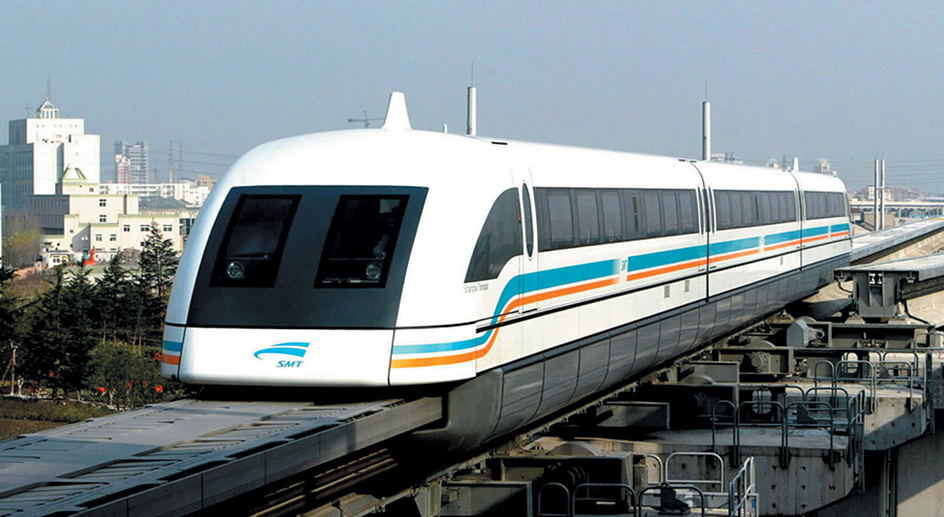Magnetic levitation train, also called maglev train, is a vehicle that uses magnetic forces to float above a fixed track, called a guideway, without touching it. The train’s speed is not limited by the friction or vibration that contact with a track would cause.

Maglev trains have several advantages over conventional wheeled trains. For example, they can reach higher speeds and operate more quietly. Their guideways, which are usually elevated, require little maintenance. They use electric current for power and therefore produce little pollution themselves.
However, building a maglev train is extremely expensive. Because it cannot run on traditional train tracks, it requires an entirely new network of guideways, constructed from expensive specialized components. For these reasons, most maglev trains remain experimental.
Researchers are developing maglev trains for urban and high-speed intercity travel in China, Germany, Japan, South Korea, the United States, and other countries. A German-designed maglev train operates in China, between Shanghai’s Pudong International Airport and downtown Shanghai. Commercial service began in 2004, with trains reaching speeds of up to 270 miles (430 kilometers) per hour. Similarly, medium-low-speed maglev trains operate primarily as commuter routes at several other locations in China, as well as in Aichi, Japan, and Incheon, South Korea. Such trains travel at speeds up to about 62 miles (100 kilometers) per hour.
Types of maglev technology.
There are two important types of maglev technology: electrodynamic and electromagnetic. Electrodynamic maglev uses magnetic repulsion (pushing away) to make the train float. Electromagnetic maglev uses magnetic attraction.
Electrodynamic maglev.
Japanese researchers have developed electrodynamic maglev test vehicles that have reached speeds of over 370 miles (600 kilometers) per hour. Their design is based on work done in the 1960’s by nuclear engineer James R. Powell and physicist Gordon T. Danby of the United States. The Japanese maglev trains use superconducting magnets—that is, electromagnets that are cooled to extremely low temperatures, and which then conduct electric current without resistance. These electromagnets are cooled using liquid helium. They are placed low on the sides of the train. As the train moves, the magnets induce (create) currents in wire coils set in the sides of the guideway, which is U-shaped. The magnetic force between the electromagnets and the induced currents lifts the vehicle. The train runs on wheels until it gains enough speed to lift off the guideway. It then travels with a clearance of about 4 inches (10 centimeters).
Electromagnetic maglev.
A group of German companies began developing a series of electromagnetic maglev test vehicles in the early 1970’s. They have tested full-sized trains that run as fast as 310 miles (500 kilometers) per hour. The undersides of these trains carry conventional electromagnets that ride beneath a T-shaped guideway. When current flows through the electromagnets, they are attracted upward to steel rails on the guideway. The cars travel with a clearance of only about 3/8 inch (1 centimeter). To prevent the magnets from hitting the guideway, the lifting currents must continually be adjusted by a fast-acting control system. This design was used for the Birmingham and Shanghai airport maglev systems.
Maglev propulsion.
A maglev train may be propelled by either a linear synchronous motor or a linear induction motor. A linear synchronous motor works with coils in the guideway that carry electric currents. The currents produce a magnetic field that travels along the guideway and pushes the train forward, much as an ocean wave pushes a surfer. The speed of the train remains constant, even during travel uphill or downhill. A linear induction motor operates similarly, but the coils that carry the current are mounted on the train, and they induce currents in either coils or conducting plates mounted on the guideway.
See also Air cushion vehicle (ACV); Electric railroad; Linear electric motor.
